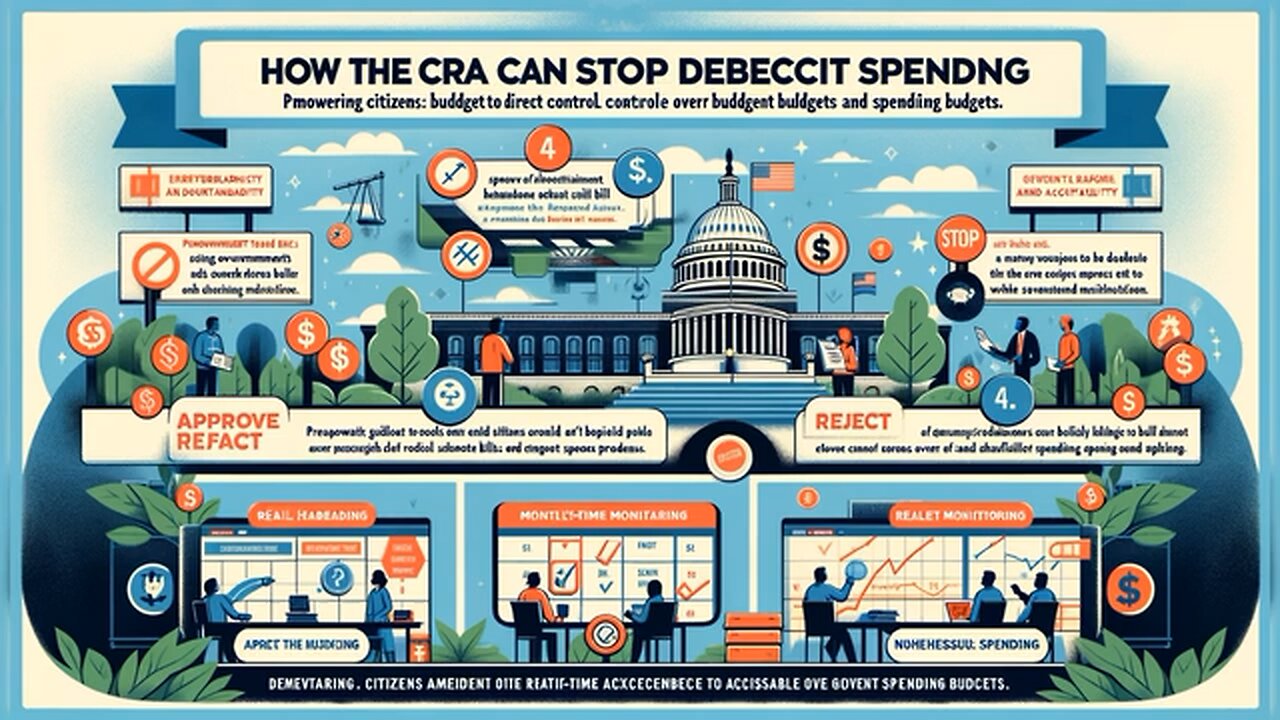Premium Only Content

### A New Perspective on the Citizens Ratification Amendment (CRA)
**Comparison with Convention of the States**
- **Convention of the States**: This mechanism, although embedded within the Constitution, has never actually occurred. The infrequency of such events highlights a critical flaw in relying on rare conventions to solve persistent issues.
- **CRA Process**: Unlike the Convention of the States, the CRA offers a continuous, monthly ratification process. This allows citizens to directly influence laws and regulations regularly, ensuring ongoing governance adjustments.
**Strengthening the Republic**
- **CRA Design**: The CRA was crafted to strengthen the republic by granting citizens just enough additional power to control the government. This enhancement ensures that governance remains aligned with the evolving values and needs of society.
- **Citizen Empowerment**: By giving citizens the ability to ratify or unratify laws, the CRA empowers them to address a wide range of issues continuously, fostering a more engaged and informed populace.
**Modern Technology Integration**
- **Accessibility**: The CRA incorporates modern technology, making the ratification process accessible through smartphones, computers, and other electronic devices. This integration ensures that all citizens, regardless of their technical proficiency, can participate in the democratic process.
- **Efficiency and Security**: The use of advanced technology, including quantum computing and AI, enhances the efficiency and security of the voting process, ensuring accurate and reliable outcomes.
**Continuous Citizen Involvement**
- **Monthly Ratification**: The CRA establishes a streamlined monthly ratification process, allowing citizens to have a direct and continuous impact on the laws and regulations that govern them. This frequent engagement contrasts sharply with the rare and cumbersome constitutional conventions.
- **Adaptable Governance**: By promoting continuous citizen involvement, the CRA ensures that governance remains responsive and reflective of the people's will. This adaptability is crucial for addressing ongoing and systemic issues effectively.
**Enhancing the Constitution**
- **Complementary Role**: The CRA does not replace the Constitution but enhances it by adding a vital layer of citizen oversight. This addition ensures that the Constitution continues to serve the best interests of all Americans while reflecting contemporary societal values and concerns.
- **Legal Stability**: Even with the ability to unratify laws, the foundational legal frameworks provided by the state and federal constitutions remain intact, ensuring legal stability and the protection of fundamental rights.
**Future-Proof Governance**
- **Adaptation and Resilience**: The CRA provides a robust framework for citizens to engage directly with their government, ensuring that the legal system evolves with societal values and concerns. This continuous adaptation promotes a more resilient and enduring governance structure for the future.
- **Final Amendment**: By solving persistent issues through continuous citizen involvement, the CRA could potentially be the last constitutional amendment ever needed, providing a sustainable and adaptable solution for governance challenges.
In summary, the CRA offers a practical, continuous, and technologically integrated approach to enhancing democratic participation and strengthening the republic. It ensures that governance remains dynamic, responsive, and reflective of the people's will, addressing systemic issues more effectively than the infrequent Convention of the States.
-
 1:04:59
1:04:59
Man in America
14 hours ago“Summoning the Demon” — The AI Agenda Is FAR WORSE Than We Know w/ Kay Rubacek
57.4K44 -
 2:16:48
2:16:48
Tundra Tactical
12 hours ago $0.13 earned🎯💥 The World’s Okayest Gun Show 🔫😂 | LIVE Tonight on Rumble!
39.6K1 -
 3:36:03
3:36:03
Mally_Mouse
1 day ago🌶️ 🥵Spicy BITE Saturday!! 🥵🌶️- Let's Play: Tower Unite!
63.5K2 -
 58:59
58:59
MattMorseTV
12 hours ago $1.70 earned🔴Trump just BROKE Newsom.🔴
82.6K94 -
 18:14
18:14
Her Patriot Voice
12 hours agoWho Is WORSE for NYC: Trump Girl or Socialist?
61.9K35 -
 3:39:42
3:39:42
SavageJayGatsby
12 hours agoSpicy Saturday with Mally! | Road to 100 | $300 Weekly Goal for Spicy Bites!
56.3K1 -
 3:35:50
3:35:50
FomoTV
14 hours ago🚨 Swamp Theater: FBI Raids Bolton 🕵 Still NO Epstein Files, Trump's Troops & the Red Heifer Hoax 🐂 | Fomocast 08.23.25
26.8K7 -
 6:04:40
6:04:40
Akademiks
17 hours agoRoc Nation & Meg Thee Stallion did a 7 HOUR Deposition with me. Drake Secret Kid Finally Revealed.
62.4K3 -
 24:19
24:19
Stephen Gardner
13 hours ago🚨BREAKING: FBI Raid of John Bolton’s House Reveals THIS!
64.4K147 -
 8:31
8:31
MattMorseTV
15 hours ago $1.22 earnedTexas just did the IMPOSSIBLE.
53.2K70